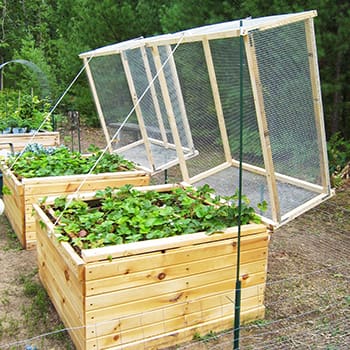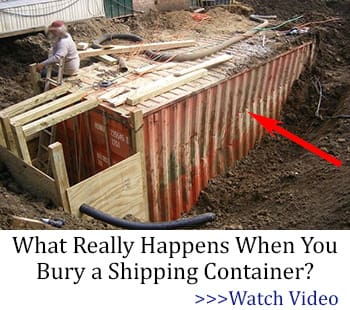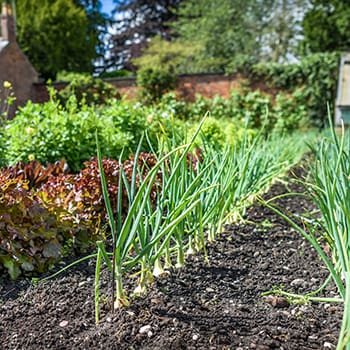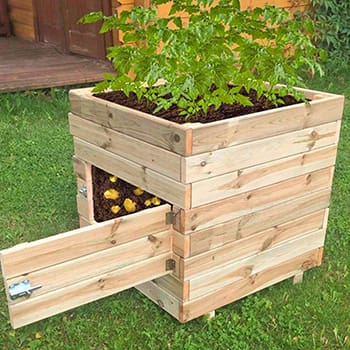The planting season is creeping up in the southern part of the country and many of us are starting plants indoors as we speak. After all, you’ll see a bountiful harvest of berries coming in soon for areas where these plants flourish in the milder winters.
However, there’s one debate that tends to overwhelm beginners: should you use the ground you already have or should you build a raised bed garden? Here, we’ll look at the pros and cons of both. Keep in mind that gardening soil available in any specific area is probably going to be a little different than another specific area, so definitely talk to your local gardening clubs to get the best advice for your soil.
Pros and Cons of Raised Bed Gardens
The pros of raised bed gardens depend on which type of raised bed garden you want to build and why you want to build it. Those wanting to grow squash in desert environments are going to need a raised bed garden (or may even need to work on container gardening). Or, perhaps your livestock is in need of an extended area to graze and you simply do not have good land where you can plant due to this.
These are wonderful reasons to build a raised bed garden. If you decide to build a table-type raised bed, you’ll have no issues with having to bend over to access your plants. Working on something a little lower to the ground? You’ve still got complete control over your soil quality, quantity, depth, and there’s no hoeing required. You just put down your bottom liner, pour your bed full of fresh soil, and away you go.
Related: DIY Elevated Raised Bed
Unfortunately, unless the bed is very deep, that means that you’ll be stuck with plants that don’t need the support of a heavy root system. With deep beds, yes, you can grow things like potatoes and peanuts, but they won’t get the same experience they get in the ground itself. We’ll get into picking your plants for each type of garden in a moment, but the largest cons for raised bed gardening systems is that they limit what you can grow both in space and in-depth.
Pros and Cons of In-Ground Gardens
Using your land, your simple patch of dirt, and making it produce something is an incredible feeling. It’s what keeps us coming back to gardening over and over again. The pros of using an in-ground gardening system are largely cost-related. You won’t have to source or buy any materials other than the amendments your soil needs for your specific plants (such as nitrogen for tomatoes) and something that can hoe up that ground. No matter whether you’re using a tiller or a hand hoe; or if you’re lucky enough to have incredibly loamy soil without it being rocky, a shovel, you’re going to need to turn over that raw earth.
The cons of in-ground gardening are usually labor-based. You’ll have to work the soil, work amendments into it, and then be ready to do it again next year. You may also have to call your county board of utilities before you start digging to make sure that nothing important is buried in the area you wish to garden. Some utilities, such as the internet, can be buried as little as a few inches deep. Your tiller will certainly eat that.
Picking Your Plants for Each Type of Garden
Two separate lists here.
For those wishing to do raised beds of up to 18″ deep (any deeper, consult the in-ground gardens list because you should be fine for those plants) :
- All nightshades
- Most cruciferous vegetables
- Greens and lettuces
- Beans of all types
- Squash, zucchini, and cucumbers
- Flowers that do not reach a height of over 24″ above ground
- Bushes that are not deep-rooted (butterfly bushes should be fine)
- Herbs of all sorts
- Almost all annuals, regardless of what they are; these plants grow fast and die after only one season. They don’t have time to create deep root networks.
- Berries
- Fruit vines
Related: 7 Common Raised Bed Mistakes Every Person Should Avoid
For those with deeper raised beds or planting in-ground systems:
- All of the above
- Corn
- Asparagus

- Rhubarb
- Long-lasting/perennial plants (explanation below)
- Melons
- Pumpkins
- Cover crops
- Fruit trees
- Nut trees
- All other flowers
While you can grow perennials in raised beds, keep in mind that raised beds will lose their nutrients much faster than in-ground gardens will simply due to exposure and being a tightly closed system. You can use fertilizers and soil amendments to fix these issues, but it is unlikely that you will get the same growing experience with these plants as you will if you simply place them in an in-ground garden (or a very deep container). Raised beds are wonderful, but they are usually used as temporary solutions or for those who have difficulties being on the ground for extended periods of time.
Homestead Gardens: Which Type To Work With?
That really depends on your soil, your location, and what you want to do with your garden. In all honesty, I recommend beginners to have a small raised bed or a few large pots in a container garden their first year. It is entirely possible that you aren’t hooked on growing things. Pick something colorful and exciting; something that you eat a lot of or that you enjoy. I personally recommend zinnias for flowers, basil or rosemary for herbs, and either beans or a type of squash for vegetables for beginners. All of these grow incredibly easily in most climates and should germinate well for you.
Remember, if you’re really in love with gardening, there’s always next season to expand and keep growing, but it can be hard to see so much work put into a beautiful garden and realize that you’re losing interest.
If you decide to (or have the ability to) work on an in-ground system, that’s great. Find a grassy area and get to work with your tiller; just be ready for those rock strikes because they can be a doozy. Even after the area has been tilled, it’s easy enough to smooth it down and let the land reclaim it if you find you don’t have time for your garden. Keep pets, livestock, and family members in mind when you place your garden, however. There are thousands of poisonous plants for both pets and livestock, and plenty that you probably don’t want your kids grabbing or chewing on, such as tomato leaves.
Final Thought
Ultimately, whichever method you decide is the one you want to try, gardening is a hobby that takes many by storm. The best vegetables you can introduce yourself and your family members to are the ones that you grow yourselves to; and the same goes for flowers, herbs, and fruits, too. There’s nothing like walking outside and picking dinner off the vine. So, pick your method and stick to it for a season. Even if nothing grows, it’s a learning experience and you’ve always got next year!
You may also like:
DIY Raised Beds For Your Backyard
The Only Food That Grows Almost Faster Than You Can Eat It (Video)
Best Crops For Your Survival Garden
A Medicinal Garden Kit For Starting A Small Backyard Pharmacy












Love tie article. Please continue to send me inf, I have started growing in large pots, I have a small area to grow in ground., I notice you have to water more often in the posts. Any suggestions, last yr I put string beans, ,cucumbers , and zucchini in posts. my ingrown tomatoes did not do well, what should I have done. Please help.
Thank You
New gardner, Retired
Don’t forget: labor intensive in-ground plantings will require WEEDING every other day, likely, and in this sauna of Western Kentucky, it is a game changer to have raised beds for the majority of our plantings. Thank you, but I will grow corn and fruit trees in raised containers because the heat, humidity, and weeds are utterly relentless here!
Where is ‘here’?
For in ground gardens, try the No Dig method, popularized by Charles Dowding. No tilling, no weeding, no fuss. This method works great! Now I won’t garden in the ground any other way. Check it out!
Hi! I absolutely LOVE three above-ground boxes that you show in this article. They would be absolutely perfect for my back yard. Is there a place to find the patterns? Thank you so much!